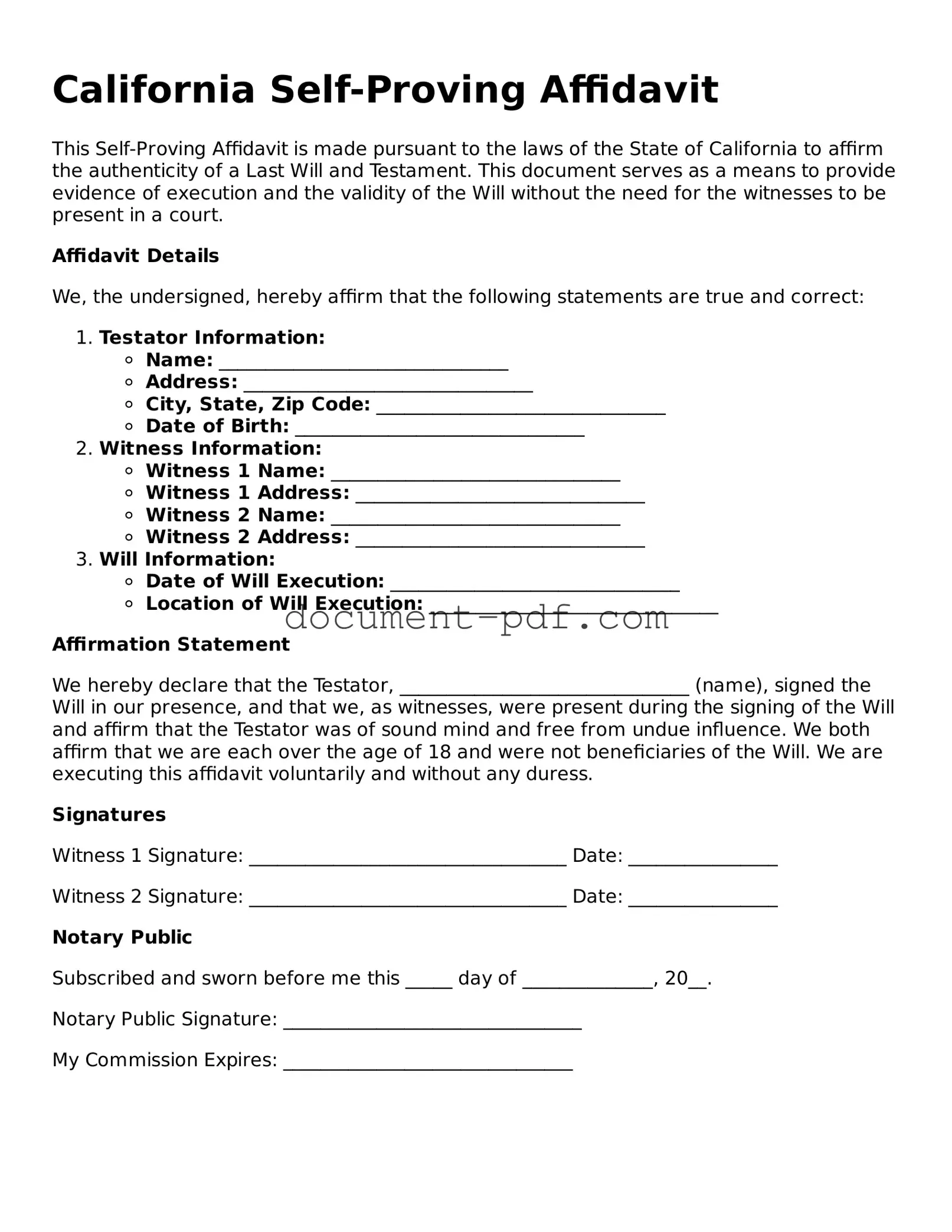California Self-Proving Affidavit
This Self-Proving Affidavit is made pursuant to the laws of the State of California to affirm the authenticity of a Last Will and Testament. This document serves as a means to provide evidence of execution and the validity of the Will without the need for the witnesses to be present in a court.
Affidavit Details
We, the undersigned, hereby affirm that the following statements are true and correct:
- Testator Information:
- Name: _______________________________
- Address: _______________________________
- City, State, Zip Code: _______________________________
- Date of Birth: _______________________________
- Witness Information:
- Witness 1 Name: _______________________________
- Witness 1 Address: _______________________________
- Witness 2 Name: _______________________________
- Witness 2 Address: _______________________________
- Will Information:
- Date of Will Execution: _______________________________
- Location of Will Execution: _______________________________
Affirmation Statement
We hereby declare that the Testator, _______________________________ (name), signed the Will in our presence, and that we, as witnesses, were present during the signing of the Will and affirm that the Testator was of sound mind and free from undue influence. We both affirm that we are each over the age of 18 and were not beneficiaries of the Will. We are executing this affidavit voluntarily and without any duress.
Signatures
Witness 1 Signature: __________________________________ Date: ________________
Witness 2 Signature: __________________________________ Date: ________________
Notary Public
Subscribed and sworn before me this _____ day of ______________, 20__.
Notary Public Signature: ________________________________
My Commission Expires: _______________________________
